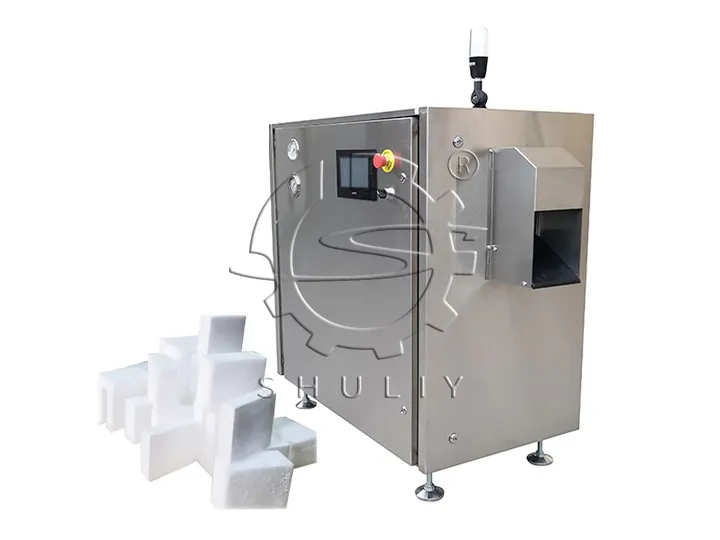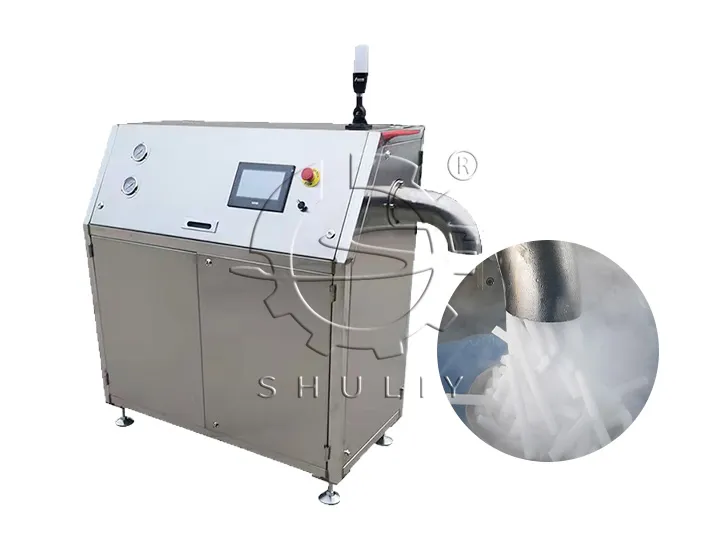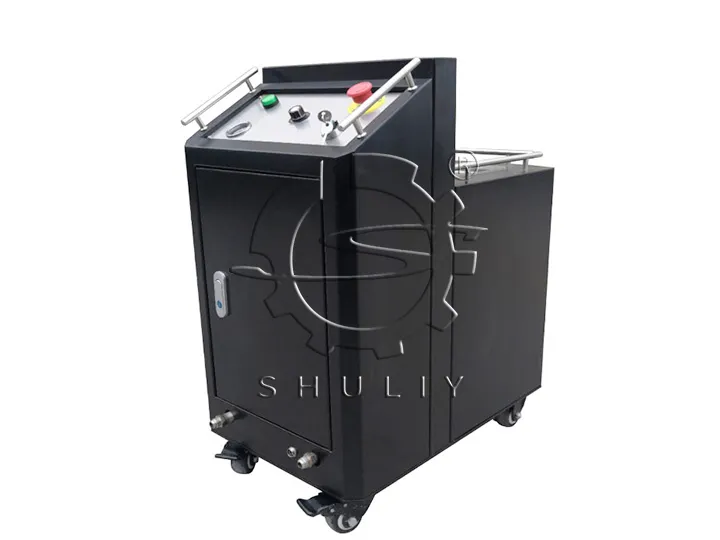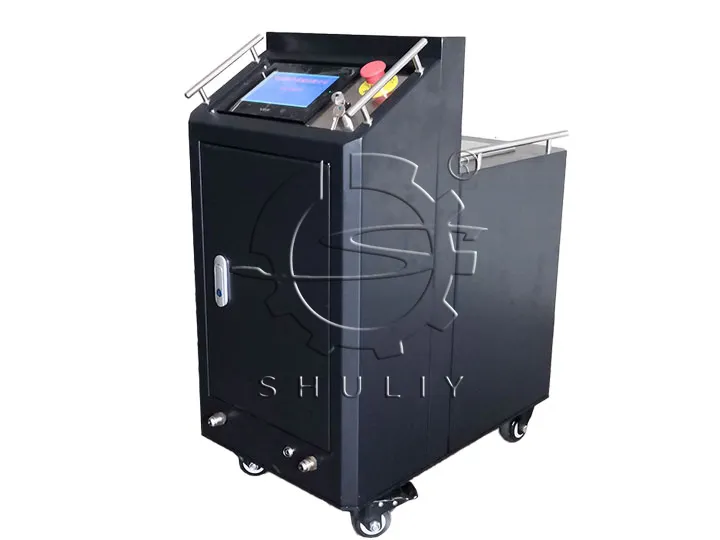Dry Ice Blocks vs. Pellets: Which Is Right for Your Business?
When a business decides to produce its own dry ice, one of the first and most critical questions is: “Should we produce blocks or pellets?” The answer isn’t about which form is “better” overall, but which is better suited for your specific application. The dry ice blocks vs pellets debate is fundamentally about physics and function.
Understanding the core physical differences between these two formats is the key to making an informed investment in the right type of production equipment.
The Science of Sublimation: Surface Area is Everything
Both blocks and pellets are solid carbon dioxide at -78.5°C (-109.3°F). However, they behave very differently due to one primary factor: surface area-to-volume ratio.
- Dry Ice Blocks: A solid block has the lowest possible surface area for its volume. This means less of its surface is exposed to the ambient air, resulting in a significantly slower sublimation rate (the process of turning from a solid directly to a gas).
- Dry Ice Pellets: A collection of pellets has a vastly larger total surface area for the same weight. Each small pellet is surrounded by air, causing them to sublimate much more quickly and release their cooling energy faster.
This single principle dictates the ideal use case for each format.
When to Choose Dry Ice Blocks: For Longevity and Bulk Cooling
The slow sublimation rate of blocks makes them the superior choice for applications where sustained, long-term cooling is required.
Primary Applications:
- Long-Haul Cold Chain Shipping: When transporting temperature-sensitive goods like pharmaceuticals or frozen foods over long distances, blocks are ideal. They last longer, reducing the need for re-icing and ensuring product integrity upon arrival.
- Large Volume Storage: For walk-in freezers or large insulated containers, a few large blocks can maintain freezing temperatures for extended periods with minimal intervention.
- Catering and Event Services: Blocks can be placed in non-electric coolers to keep food and beverages cold for the duration of an event without turning into a pool of water.
To achieve the high density needed for a slow sublimation rate, blocks are formed under immense force. This process requires a robust dry ice block machine, which uses a powerful hydraulic system to compress CO₂ snow into a solid, durable form.
Advanced Dry Ice Block Machine for Dry Ice Production
When to Choose Dry Ice Pellets: For Speed and Precision
The rapid cooling power and high surface area of pellets make them perfect for applications that demand speed, coverage, and precision.
Primary Applications:
Dry Ice Blasting: This is the primary use case for pellets. Their small size allows them to be accelerated by compressed air, providing a powerful yet non-abrasive cleaning method that is highly effective for industrial equipment, molds, and historical restoration.
Food Processing: Pellets can be mixed directly into food products (like ground meat or dough) for rapid and uniform temperature reduction during processing without adding moisture.
Laboratory and Research: In labs, pellets provide on-demand, rapid cooling for preserving biological samples or chilling chemical reactions.
The manufacturing of these uniform, small-diameter pellets is a distinct process that requires a specialized dry ice pellet machine, which extrudes the CO₂ snow through a die plate to create the desired size.
Making the Right Choice: A Summary
The dry ice block vs pellet decision ultimately comes down to your primary business need.
| Feature | Dry Ice Blocks | Dry Ice Pellets |
|---|---|---|
| Sublimation Rate | Slow | Fast |
| Primary Function | Sustained, long-term cooling | Rapid, precision cooling & blasting |
| Best For | Long-haul shipping, bulk storage | Dry ice blasting, food mixing |
| Handling | Easier for large, simple placements | Better for automated processes, mixing |
| Production Unit | HR-KZ Series Block Press | HR-KL Series Pelletizer |
By analyzing your core operational requirements against the physical properties of each format, you can confidently select the right production equipment to maximize efficiency and return on investment.




